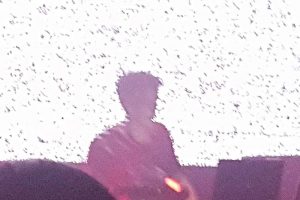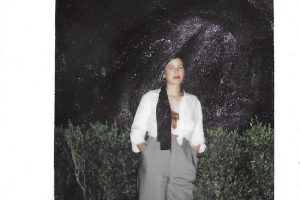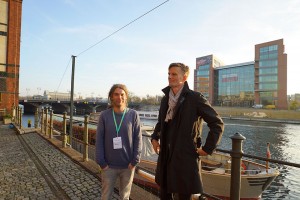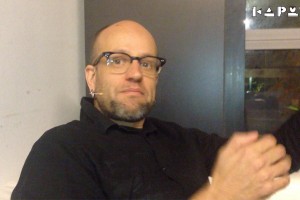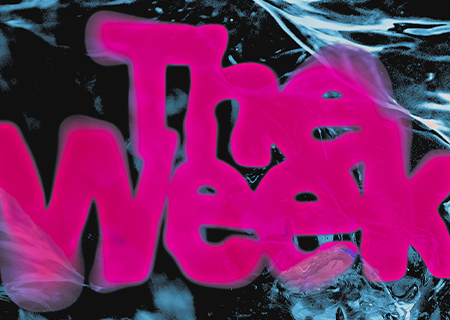What the hell is music really?
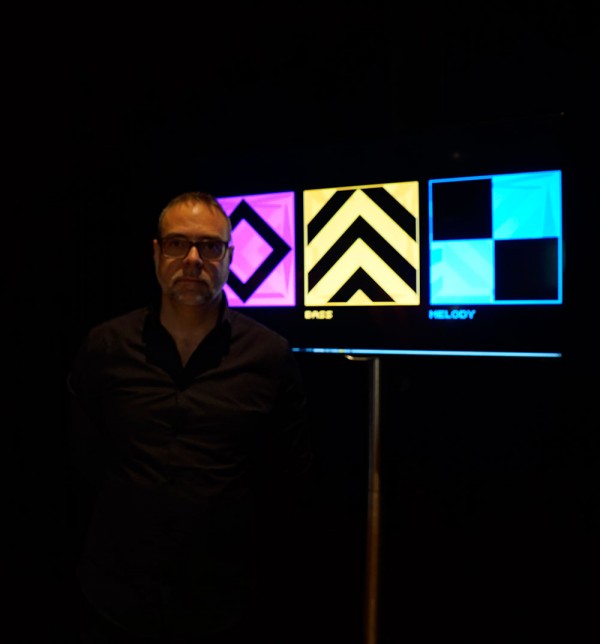 Besides opening an inspiring field for the exchange on the status quo and future of music production and of course also presenting their own new Ableton products, the Loop event initiated by the Berlin based software house was also showcasing three impressive installation works from the Swedish producer Håkan Lidbo.
Besides opening an inspiring field for the exchange on the status quo and future of music production and of course also presenting their own new Ableton products, the Loop event initiated by the Berlin based software house was also showcasing three impressive installation works from the Swedish producer Håkan Lidbo.
Thomas Venker took the chance for a personal tour and talk.
Håkan, how did you happen to get active in the field of interactive installations?
I’ve made hundreds of records over the last 20 years, mostly house and techno but also straight up pop and very experimental stuff. 10 years ago I started a radio show and a festival and at the same time I did some conceptual albums. One where we sent specially composed music into space. One were we did different future scenarios stretching like 50-80 years ahead – and then created music the way it will sound in the future. One where we asked 10 music critics to write reviews of songs that didn’t yet exist – then 10 artists made music from the reviews that became an album. And a few other conceptual music projects, often in collaborations with scientists.
What are you looking for?
So from these projects some very profound questions started to come back to me: What the hell is music really? Music has been with us since we became humans and will probably stay with us as long as we exist here on earth. It’s an expression of human’s unique ability for imagination, it’s an expression of gravity on earth, it’s often the key to unlock our emotions. So music is a fundamental part of the human construction but we still know very little about what it is and why it’s so important, in every culture and in most people’s life.
At the same time my interest in music became more about exploring the very outer limits what music can be. How fast, slow, hard, soft, abstract, how weird can it be? And from there I asked myself: What, on a fundamental level, can music be except what it already is? I mean, only the past few years, music has changed from being a piece of plastic you buy in a record shop to almost a human right. If you buy a new flat in Stockholm, where I come from, you often get Spotify included. So it has change to something similar to fresh water or democracy. The right to have access to most music ever made, right now, preferably for free. But still, most songs are four minutes of verse and refrain, lyrics about lost love, coming out from your laptop or phone. I believe music can and will be something completely different – and this is what I’m trying to find out.
The projects I make are sometimes very impractical as musical instruments but hopefully they can inspire to think about music in new ways.
How does one have to imagine your time management these days? Do you share your artistic day between the regular music productions and those interactive works?
I honestly don’t spend a lot of time with regular music production. I still release music but it’s only for my own pleasure nowadays. I don’t make a lot of 4/4 club tracks any longer (but I’m working on a program that can do it for me automatically). I’ve made thousands of club tracks but today there are so many other producers doing the same thing, so I would be a rather mediocre producer if I would continue doing the same thing. Now I’m more into long compositions, soundscapes, sound-stories and thematic, electronic music. Most of my recent songs are around one hour as that format demands a different kind of listening. But again, most of the time I spend building new music interaction machines in our lab. Instead of a bunch of synths and drum machines, I’m nowadays surrounded by electronic components and tools, robots and sensors. But even if some of the projects doesn’t even have to do with music, my experience from making all these songs in the past allows me to work fast and intuitive, not forgetting that its the emotional experience of the outcome that matters, not the technology itself but what it feels like interacting with the machines.
During Ableton’s Loop event there were three of your installations on show. Let´s visit them one by one:
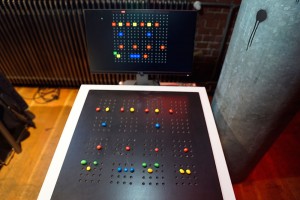 The Candy Synth
The Candy Synth
Made by Håkan Lidbo and Per-Olov Jernberg
How did you get the idea to this chocolate installation?
We made another project with 16 rubik’s cubes where we tracked the 6 different colors so they controlled 6 different instruments. In that installation music creation became a 3-dimensional puzzle. But when we changed the algorithm so it instead tracked the colors of M&M candy, music suddenly became eatable. And that’s pretty weird, isn’t? Make a song and then eat it…
Is this something you sometimes use for your shows as it is quite visual effective?
It’s not a very efficient live instrument as it’s not very exact. The tempo fluctuates and you can’t sync it externally. But it sounds OK, looks good and taste great!
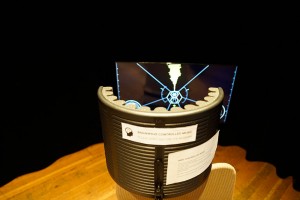 Mind Controlled Music
Mind Controlled Music
Made by Håkan Lidbo and Cornelia Sojdelius and Ludvig Elblaus.
You worked for this one with handicapped people from a hospital? Which one?
This installation is a part of a exhibition at Sweden’s Museum of Science and Technology. I also did another installation for this exhibition where you create music by touching certain areas of a 300 kg starfish-shaped sculpture and at the same time touching each other. It works with conductivity and humans have good conductive properties. The installations were developed in collaboration with different groups of disabled people; blind, deaf, paralyzed or with cognitive disabilities. They did different tests to find a way so that they could enjoy the installations just as much the rest of us.
How was the working process? Was this a learning process in both directions?
Some years ago I did a tennis game for blind people where you play with sounds and music instead of a ball – and I learned a lot from that experience. So working with disabled is really interesting and rewarding. The tests were necessary to identify the different obstacles disabled have to face. For example the sound is designed so it sounds good in speakers or through headphones but at the same time there are bass shaker elements that make inaudible vibrations. And the vibrations have to feel good and be clear for deaf people to be able to interact.
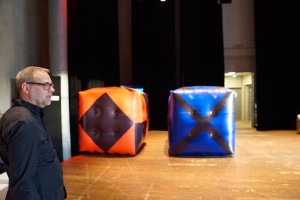 We call them Big Ass Midi Cubes
We call them Big Ass Midi Cubes
Made by Håkan Lidbo and Per-Olov Jernberg
This one looks and feels quite show-ish too. Have you thought of including them in performances too?
No, most of my instruments are not meant to be performed like a music instrument in front of an audience. I want the audience to be the musicians and then the learning curve have to be very fast, you should be able to play it right away: just flipping them gives an immediate musical response. But at the same time a good interactive project should have enough depth and possibilities so that you can explore lots of functions and musical expressions. These cubes are maybe one of the least expressive instruments we’ve made this far, but we’re working on adding more features so they will be more versatile in the future.
I guess that those three are not the only interactive installations you worked on. What else do you have in your secret room?
I have lots of projects I’m working on. A car ballet, a way to transform a whole building into a collaborative music instrument, a system of 20 motion sensors so that people in a big room control the music in 20 channels, electronic music instruments made of paper etc. Another project that is pretty cool is a set of robotic drums that also includes midi-controlled human drummers. By inducing electricity into their muscles they play as they are programmed. It’s a really weird thing to having people involuntary playing music. I love it.
What’s coming out next from you, also in the field of regular music productions?
Just a few experimental album projects. Nothing that a lot of people would buy. But that’s not the purpose. In the future it will be illegal to charge money for music.







